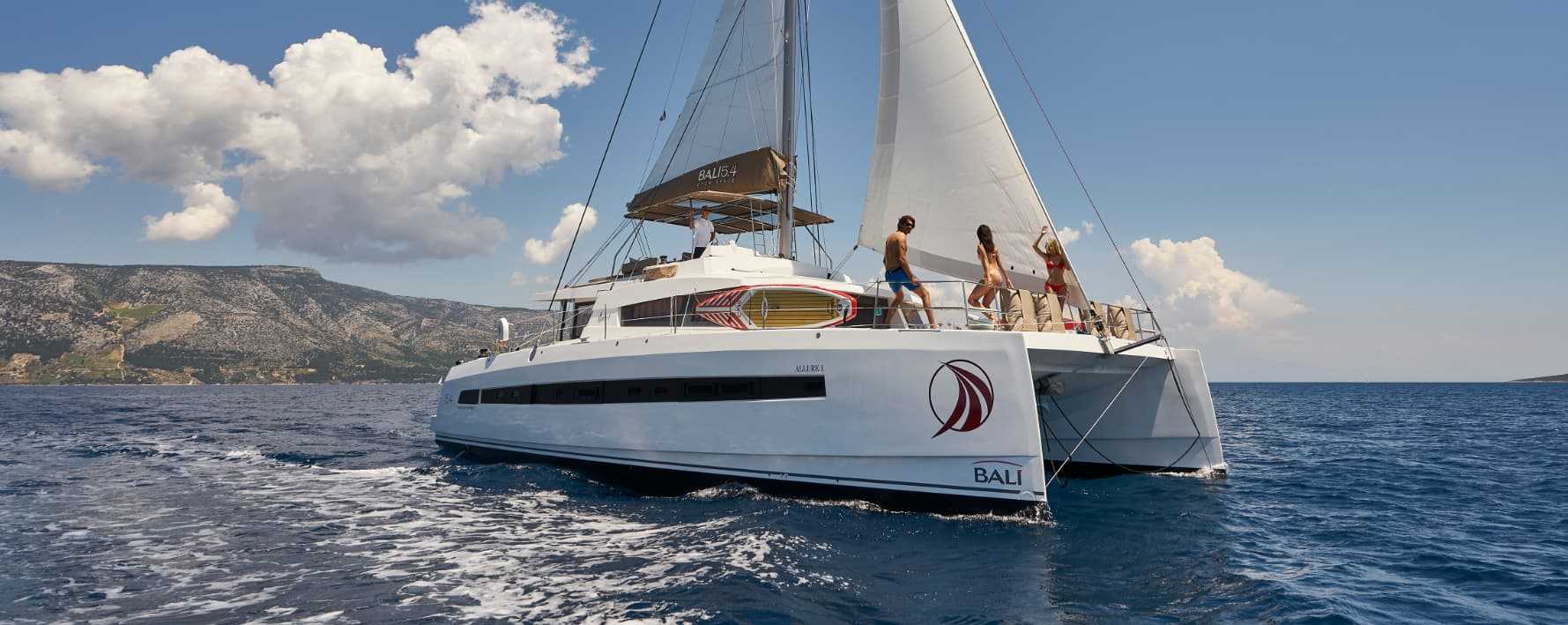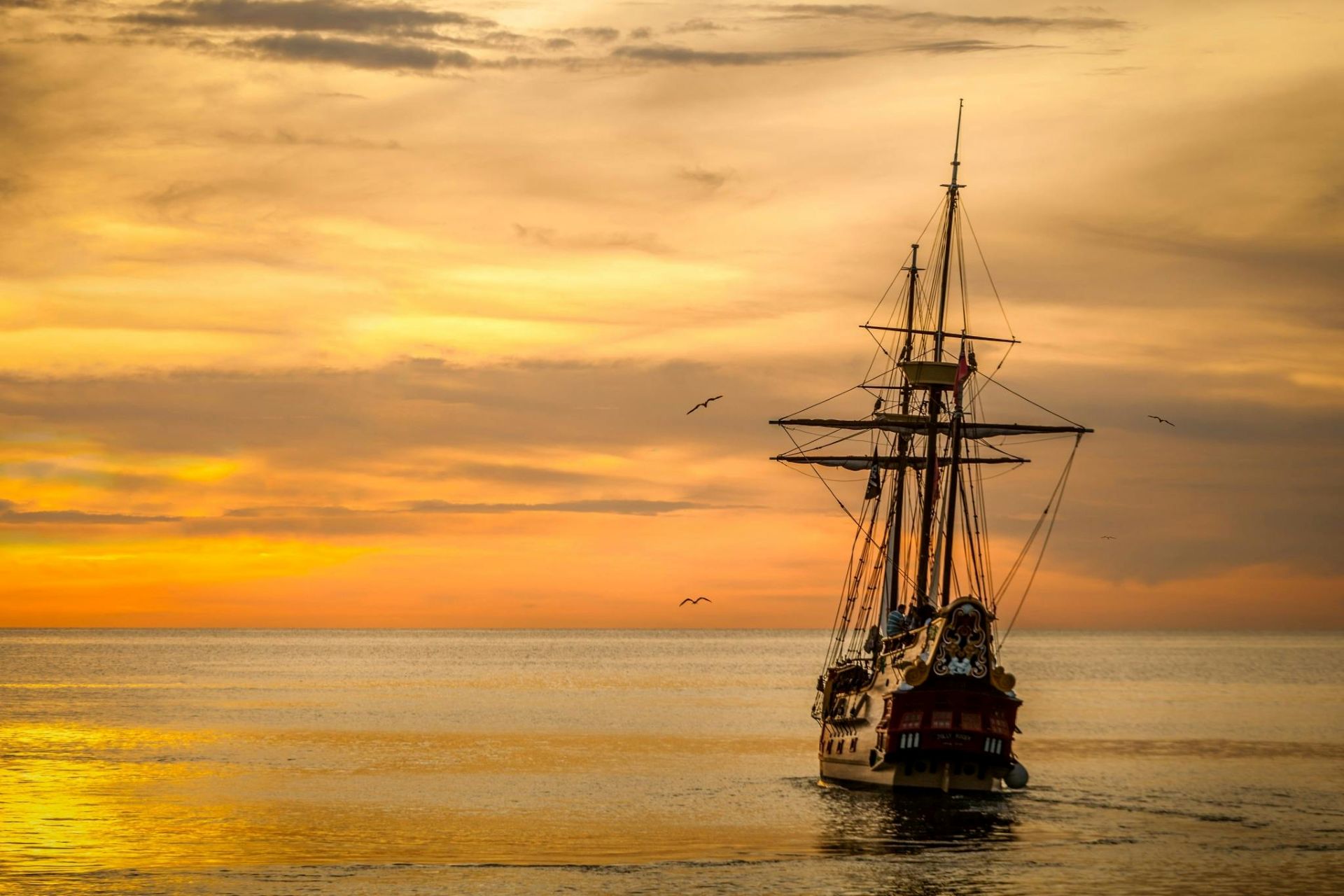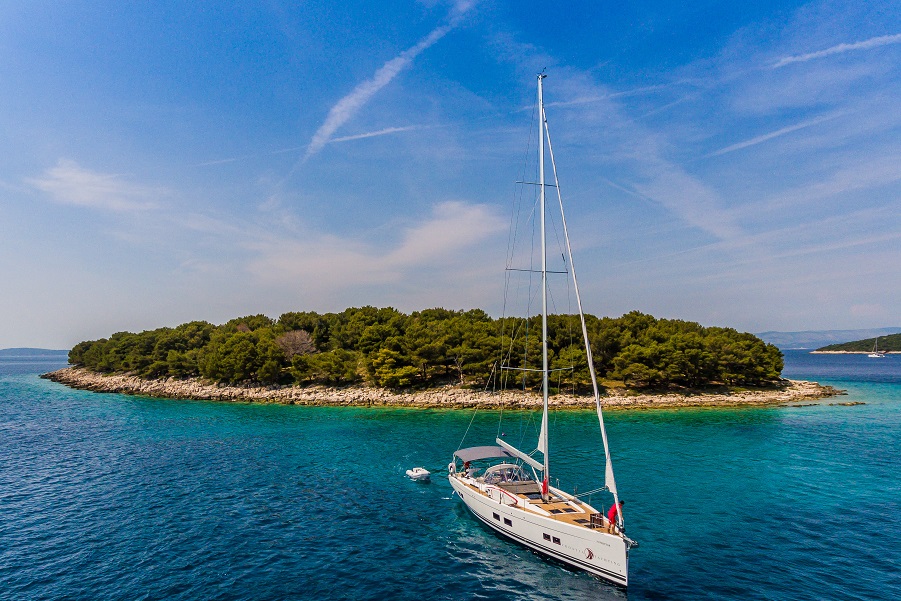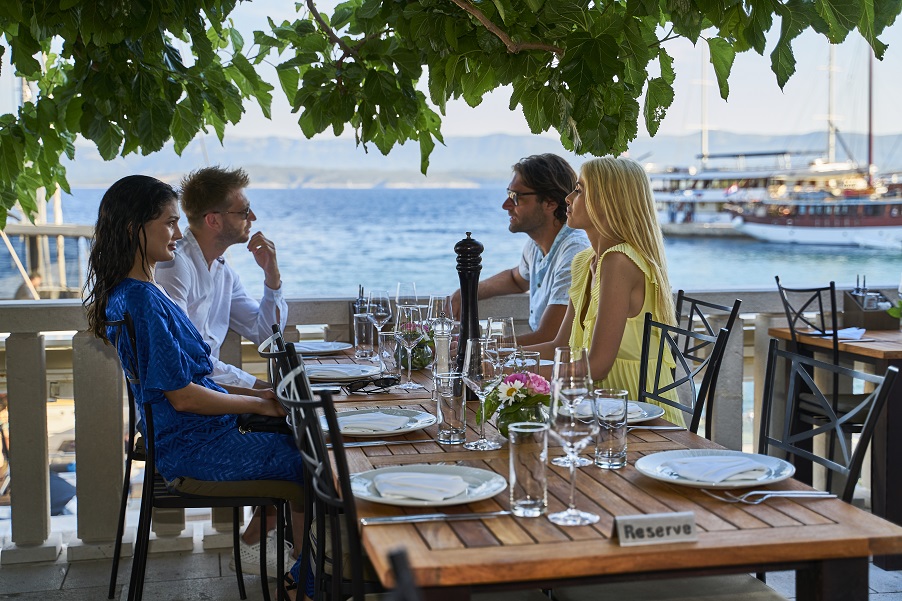Pirates on Halloween: why we still love to dress up as them?

Table of Contents
- The Golden Age of Piracy
- Democracy and Discipline Beneath the Sails
- Pirates of the Adriatic
- The Faces Behind the Myth
- Blackbeard
- Grace O’Malley
- William Kidd
- Modern Pirates: The Antiheroes of Today’s Screen
- The Traditional Pirate Costume: Symbols of Identity and Rebellion
- Pirate Costume on Halloween
- What modern sailors can learn from pirates?
- Why Pirates Continue to Captivate Our Hearts?
The creaking of wooden masts, the salty scent of the sea, and the endless whisper of the waves have always been entwined with the image of the pirate—mysterious sailors who for centuries dared to forsake rules to live freely. Even in the age of digital technology and busy lives, pirates remain powerful symbols of rebellion, freedom, and the complexities of the human spirit. Far from simple villains, pirates are people full of contradictions whose strength lies in their imperfections and depth of character. Especially during Halloween, when many don their costumes, they give in to that deep yearning for freedom and a chance to be someone else, even if just for a night.
The Golden Age of Piracy
Between the mid-17th and early 18th centuries, the seas saw a surge in piracy activity that shaped maritime history. Known as the Golden Age of Piracy, this period was marked by pirates dominating key maritime trade routes across the Caribbean, Atlantic, and Indian Oceans. Though often portrayed as lawless villains, pirates operated under codes known as pirate articles.
These codes regulated division of plunder, conduct on board, and punishments for betrayal—essentially creating miniature maritime democracies in opposition to the rigid colonial powers ashore.
Pirate communities prized a unique balance of freedom and order, enabling vast crews to cooperate and survive in brutal conditions. Votes decided leadership and battle strategy, while discipline ensured survival on the turbulent seas. This self-governed system was revolutionary and effective, a stark contrast to the authoritarian regimes ruling on land.
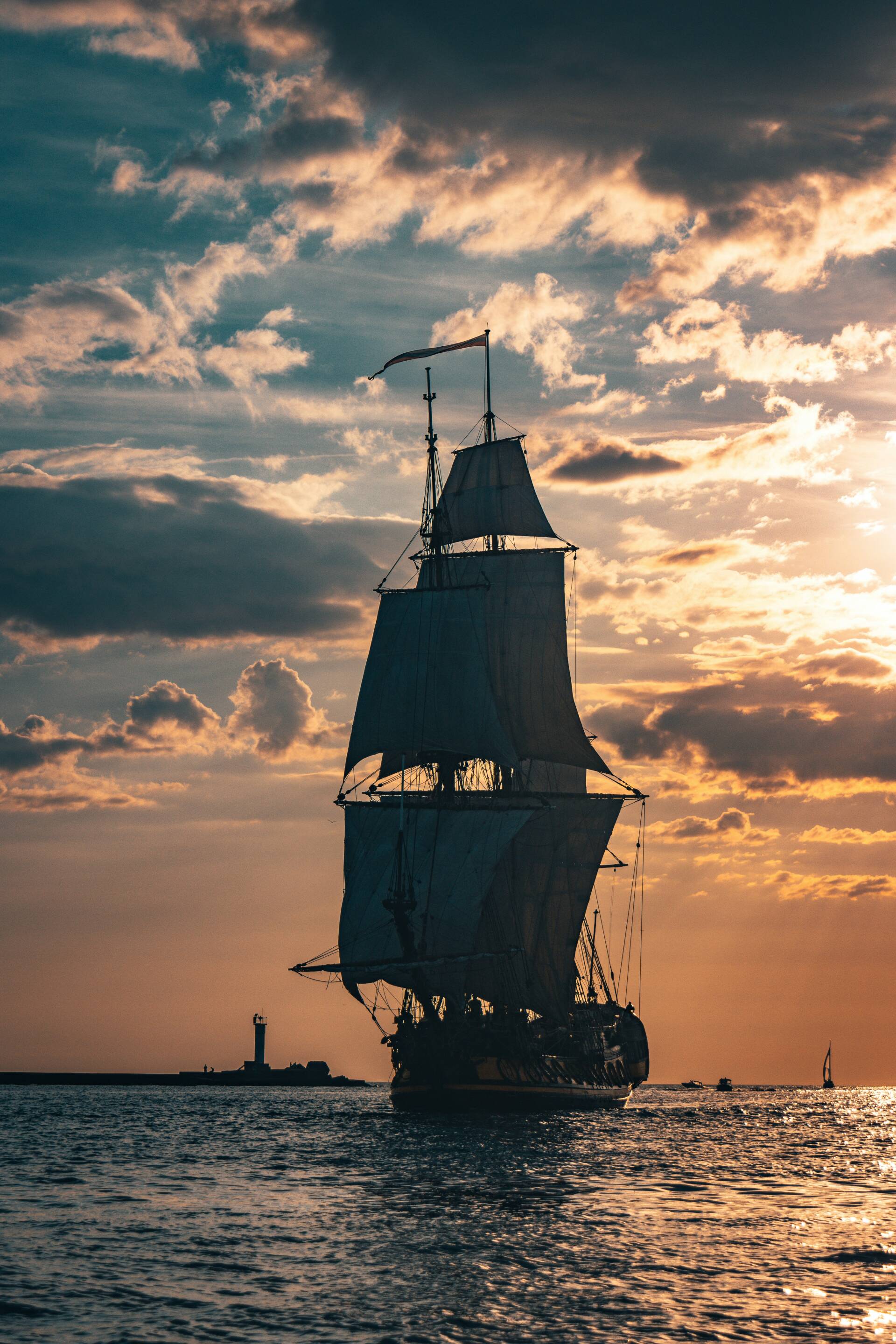
Democracy and Discipline Beneath the Sails
Pirate ships were governed by surprisingly egalitarian principles for the era. Every crew member had a say in decisions including electing or overthrowing captains and consenting to raids. The internal discipline, enforced by leaders like Bartholomew Roberts, who was known for his strict but fair code, held pirate society together.
This balance was critical: without order, chaos would mean death on the unpredictable seas. Pirates lived by mutual respect, cooperation, and shared risk—tenets that reflect both pragmatism and a uniquely democratic ethos.
Pirates of the Adriatic
Piracy also flourished on the Adriatic Sea, gaining distinctive local flavor. As early as ancient times, Illyrian tribes used corsair tactics to control coastal areas. Among these figures, the queen Teuta stands out as a notable naval leader whose corsairs menaced Roman and Greek merchant shipping.
In the 16th and 17th centuries, Uskoks —pirate warriors near the borderlands between the Venetian Republic and Ottoman Empire—used swift vessels and hidden coves for raids, acting as defenders and fierce resistors. Their impact shaped that era’s maritime conflicts.
Even into the 18th century, the Adriatic remained a hotbed of pirate activity, with corsairs from several nations—Venetian, Ottoman, French, and others—regularly clashing on these strategic waters, contributing to a layered maritime heritage.
The Faces Behind the Myth
Pirates were far from being archetypal heroes or villains; they were complex individuals shaped deeply by the turbulent times they lived in, and their stories continue to captivate because of their humanity and contradictions.
Blackbeard
Edward Teach, perfectly embodied the art of fear and tactful cunning. His intimidating presence—with his thick, braided black beard often lit with slow-burning fuses—was a deliberate tactic to instill dread in enemies and maintain control over his crew. Yet behind this fearsome image was a shrewd strategist who knew how to command loyalty and respect. Blackbeard was not merely a ruthless marauder; he carefully balanced intimidation with promises of wealth and freedom, fostering unity and discipline among his men. His leadership was as much about psychological mastery as it was about brute strength, and his ability to create an almost mythic persona ensured his crew’s obedience and his legend’s survival long after his death.
Grace O’Malley
Known as the Pirate Queen of Ireland, defied all expectations imposed by her gender during the 16th century. Fierce in battle and skilled in diplomacy, she led her crew with both courage and political tact. O’Malley negotiated with kings and queens, skillfully balancing her seafaring life with the complex court politics of her time. Her story reflects the challenges and resilience of women in a male-dominated sphere, imprinting a legacy that transcends mere piracy and speaks to strength, leadership, and survival in harsh conditions.
William Kidd
Often portrayed as both a privateer commissioned by authorities and a notorious outlaw, he exemplifies how blurred the lines between legality and crime were during that era. His story reveals how political intrigue and shifting allegiances influenced who was branded a pirate and who was a loyal subject. Kidd’s trial and execution demonstrate the precarious position of maritime figures caught between imperial interests and personal ambition, showing that justice in the age of piracy was often as mutable as the seas themselves.
Together, these stories humanize pirates by revealing lives driven not simply by greed or violence but by survival instincts, ambition, loyalty, and profound imperfections. They remind us that piracy was as much about social dynamics, leadership, and human complexity as it was about adventure and lawlessness—a theme still resonant in today’s fascination with these legendary figures.
Modern Pirates: The Antiheroes of Today’s Screen
Contemporary media has embraced pirates as multifaceted antiheroes. Characters like Jack Sparrow from Pirates of the Caribbean combine unpredictability, humor, and depth, captivating audiences worldwide. Television series such as Our Flag Means Death and Black Sails delve into their moral ambiguities and personal conflicts, painting pirates as deeply human.
Their relevance endures because they mirror modern humanity’s complexities—no one is purely good or evil, but a blend of traits and choices, much like the perilous and unpredictable life at sea.

The Traditional Pirate Costume: Symbols of Identity and Rebellion
The classic pirate costume is instantly recognizable, each element steeped in meaning. The wide-brimmed hat, often adorned with feathers or ribbons, was a distinctive marker and practical sunshade. Loose-fitting shirts, typically of cotton or linen, offered comfort for life aboard ship. Long coats or vests with brass buttons protected against the sea’s chill.
Bandanas or scarves, worn around the head, neck, or waist, were both protective and symbolic of allegiance. Trousers were roomy for ease of movement, paired with rugged boots suited to slippery decks.
Jewelry, including earrings and rings, served as portable wealth and talismans. Weapons such as sabers, pistols, and daggers completed the imposing yet charismatic look. The infamous black flag with skull and crossbones identified pirates and spread fear.
Pirate Costume on Halloween
Donning the pirate costume during Halloween is both a form of play and an expression of deeper desires to escape normative roles. The costume invites exploration of personality facets—from boldness and cunning to charm and mystery.
It is an emblem of rebellion against societal expectations and an invitation to creative self-expression, linking wearers to a rich maritime heritage and a community of like-minded free spirits.
For sea lovers and nautical enthusiasts, wearing pirate attire becomes a tribute to tradition and a personal statement embodying the spirit of adventurous freedom.
What modern sailors can learn from pirates?
Modern sailors can learn a great deal from pirates. Although the pirate lifestyle was harsh and often brutally lawless, their example offers valuable lessons that remain relevant today, especially regarding respect for the sea, teamwork, and personal responsibility.
- First, pirates conquered the seas with intuition and experience, skillfully managing vessels often comparable to today’s sailboats and smaller yachts. Their deep understanding of wind, currents, and navigation highlights the importance of practical education and maritime skills adapted to nature’s conditions. Modern sailors can learn that while technology plays a vital role, tradition and a keen sense for the sea and environment—qualities essential to pirates—should never be neglected.
- Second, pirate life was built on close cooperation within a small community. The crew had to function as a well-coordinated team, each member responsible for specific tasks, with mutual trust and communication essential for safety and success at sea. Today’s sailors can recognize the importance of team cohesion, clear communication, and respecting roles—crucial elements on any sailboat or yacht.
- Third, despite their dark reputation, pirate codes contained strong moral and ethical standards suited to their dangerous lifestyle.These codes emphasized responsibility to the community, fair resource distribution, and strict prohibitions against betrayal. This teaches us the lasting importance of accountability, integrity, and honesty—values equally vital in modern nautical environments to maintain safety and harmony among crew members.
- Finally, pirates embodied the spirit of adventure that continues to inspire sailors to discover new shores, explore unknown waters, and live the freedom the sea provides. This authentic spirit of exploration and independence can be a source of inspiration and a reminder that sailing is much more than technical skill; it is a calling and an expression of freedom.
In short, modern sailors can learn from pirates to appreciate the sea, nurture community and responsibility, and sustain the spirit of freedom and exploration that separates true lovers of the sea from casual visitors. This connection between pirate heritage and modern sailing enriches both the practice and passion for life at sea.
Why Pirates Continue to Captivate Our Hearts?
Pirates symbolize the universal desire for freedom and authenticity in a complex world. They remind us of the inner rebel and the multifaceted self we each carry—strengths and flaws alike. In increasingly regulated and conformist societies, pirates offer a temporary refuge and a chance to assert individuality.
Halloween awakens this desire, allowing us to inhabit a freer, more adventurous self—a life less ordinary though only for a night.
